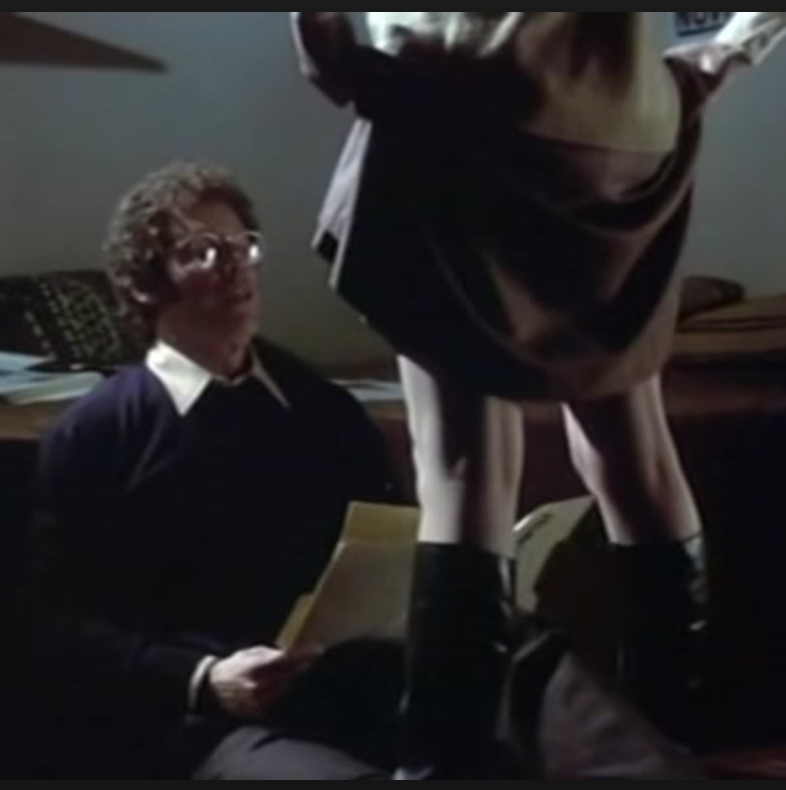 There are films that ripen on the vine, and then there is “Looking for Mr. Goodbar,” Richard Brooks’s 1977 adaptation of the Judith Rossner novel inspired by a NYC schoolteacher killed by a one-night stand. It was a crime that seized national attention – for some, as a cautionary tale about women’s liberation; for others, as a case study in lethal misogyny. Rossner’s fictionalized account–lurid and lucid both–was such a critically touted bestseller that the term “Mr. Goodbar” became mainstream slang for a hot one-night stand. But while Brooks’s film made bank, reviews were mixed. Viewed forty years later, you can see why. Its ambivalence about independent female sexuality makes for a jarring, fractured viewing experience if also a fascinating time capsule of the hypocrisies necessitating today’s #metoo revolution.
There are films that ripen on the vine, and then there is “Looking for Mr. Goodbar,” Richard Brooks’s 1977 adaptation of the Judith Rossner novel inspired by a NYC schoolteacher killed by a one-night stand. It was a crime that seized national attention – for some, as a cautionary tale about women’s liberation; for others, as a case study in lethal misogyny. Rossner’s fictionalized account–lurid and lucid both–was such a critically touted bestseller that the term “Mr. Goodbar” became mainstream slang for a hot one-night stand. But while Brooks’s film made bank, reviews were mixed. Viewed forty years later, you can see why. Its ambivalence about independent female sexuality makes for a jarring, fractured viewing experience if also a fascinating time capsule of the hypocrisies necessitating today’s #metoo revolution.
Fresh off the heels of her “Annie Hall” success, Diane Keaton stars as Theresa Dunn, roughly based on real-life victim Roseann Quinn. But while Keaton retains some of Annie’s daffiness, Theresa’s shadows live close to the surface; she’s haunted by her repressive Irish Catholic upbringing and a childhood scarred by scoliosis. When we meet her, she’s studying to become a teacher and sleeping with her married professor (Alan Feinstein), a pipe-puffing cad who sports the unfortunate male perm that was de rigueur in the late 1970s. While he struts in front of her classroom, she fantasizes about fucking him in a hot flash; the film is very big on psychosexual stills a la “Rosemary’s Baby” and “The Exorcist.”
The horror film connection is not a coincidence, nor is the dark current of Catholicism running through all three projects. When Theresa’s professor dumps her – she attempts to dissuade him by pulling up her skirt, revealing her pussy to him and her ass to us – the rejection liberates her to confront other male bullies in her life, including her father (Richard Kiley), under whose roof she still lives. Soon enough, she finds a roof of her own and commences a double life in which she teaches deaf children by day and picks up increasingly rough trade at night. It’s a bifurcation echoing the virgin/whore split of her religious education, and she dives deep into the abyss looming between the two roles. Drowns, even.
A flesh-tinted chiaroscuro emphasizes that duality, with peachy light bathing her students in classic “yo, teach!” moments and gloom settling in the corners of the single-girl pad she deliberately doesn’t spruce up. “Do you not wash the dishes because the roaches are hungry?” asks one late-night suitor.  “Why else?” she replies offhandedly. Brooks, who also wrote the screenplay, gives her a lot of cynical-lady rejoinders and bumpersticker-ese that make her seem like a 1940s fast-talking dame who just happens to have burned her bra. “Everybody’s taking something or they wouldn’t make it till morning.” “One man’s too many and a million’s not enough.” And of course, “I am alone, not lonely!”
“Why else?” she replies offhandedly. Brooks, who also wrote the screenplay, gives her a lot of cynical-lady rejoinders and bumpersticker-ese that make her seem like a 1940s fast-talking dame who just happens to have burned her bra. “Everybody’s taking something or they wouldn’t make it till morning.” “One man’s too many and a million’s not enough.” And of course, “I am alone, not lonely!”
Most of the second half of the film is set in the single-bar scene, though in which city is unclear. That lack of specificity feels deliberate, as if Brooks is suggesting that Theresa’s story is a dime a dozen. Certainly her tricks blend into each other, though she does find some toothsome prospects. In the 1970s, small-framed, brunette male beauties reigned supreme – think young Robert De Niro and Al Pacino – and Richard Gere steps into that role as a swaggering mass of insecurities and cocaine sweat encased in tighty-whiteys and anti-women slurs. Theresa doesn’t care so long as he slips out before dawn. “Kiss my ass,” he calls as he takes his leave. “I just did,” she says, smiling as if he’s complimented her cooking.
If that exchange sounds a bit bogus, the whole film does, at least to this reporter. Ostensibly, Theresa craves erotic autonomy, but we’re meant to see how hollow she finds this promiscuity. A Catholic social worker tries to woo her – blonde, so you know he doesn’t have a shot – but his peremptory airs send her into the arms of Gary (Tom Berenger), another pretty-eyed, dark-haired misogynist. Gary turns out to be a closeted homosexual enraged by his inability to perform sexually with women–Freud’s ugliest theories runs amok here–and the film devolves into an outright slash-and-gasher, with Theresa’s demise revealed in quick, silent images that winnow to a woman-on-the-moon oval floating on an otherwise-black screen.
End credits may roll, but questions remain even now. Are we meant to sympathize with Theresa or her self-hating assailant? Is this a moral fable or a nervy, journalistic mise-en-scène? Certainly the depiction of Theresa’s erotic desire is a disaster.  Keaton has always dropped the ball in sex scenes, and Brooks doesn’t extract more from the actress than her standard feigned pleasure – all pretty little hair tosses and faint, movie-star moans. Worse, we’re always viewing her over the shoulder of her sexual partners, which means we’re participating in their perspective rather than hers.
Keaton has always dropped the ball in sex scenes, and Brooks doesn’t extract more from the actress than her standard feigned pleasure – all pretty little hair tosses and faint, movie-star moans. Worse, we’re always viewing her over the shoulder of her sexual partners, which means we’re participating in their perspective rather than hers.
That said, the bar scenes – long, steamy montages – are compelling in that cruising-old-youTube-videos sort of way, as are the disco tracks and the long pans of bumping-and-grinding swingers clad in tight slacks and wide collars. “Mr. Goodbar” may conflate female objectification with sexual liberation, but its willingness to wallow in the era’s incongruities makes it an excellent primer in pre-Tinder romantic and sexual congress. The road between there and here is clear as day, for better and worse. Mostly worse.
This originally was published at Signature.
